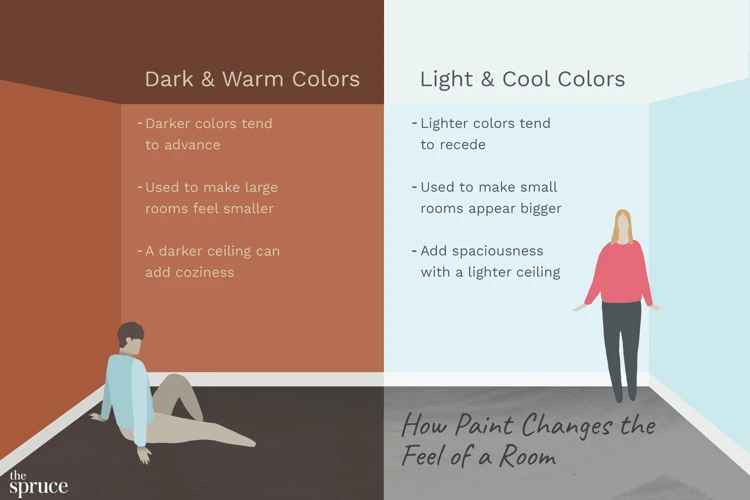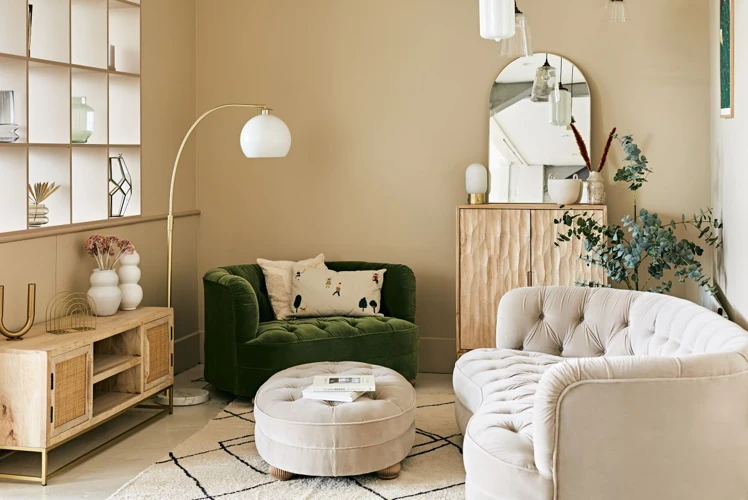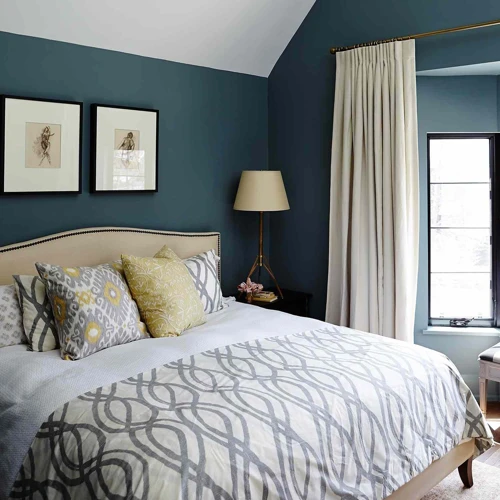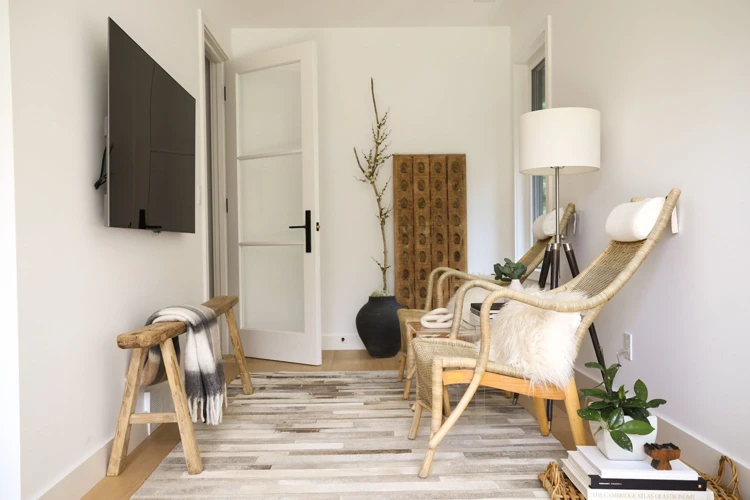Embarking on the journey of decorating can often be a challenging feat, more so within the confines of compact quarters. Here, we delve into the transformative power of hues, offering insights on how to color small living areas and harnessing the potential of small room color psychology, ultimately maximizing space with color. The right palette can not only redefine the area’s aesthetics but also its perceived dimensions.
Understanding Small Room Color Psychology
The significance of color in shaping our emotional and psychological states is profound, especially in intimate environments. Small room color psychology explores how various shades impact our mood and perception of space, influencing our comfort and behavior within these areas. Grasping this can be instrumental in creating a desired ambiance in snug surroundings.
Maximizing Space with Color: An Overview
Maximizing space with color is not just about picking a shade for the walls; it’s about crafting an optical illusion. The strategic use of color can effectively ‘push’ walls outward, ‘raise’ ceilings, and illuminate dark corners, contributing to an airier and more open feel even in the most limited spaces.
Best Colors for Small Spaces
When it comes to enhancing petite places, the best colors for small spaces are those that encourage a sense of expansiveness and airiness. This section will highlight paint colors for small rooms and offer guidance on how to color small living areas with an eye for spatial optimization.
Paint Colors for Small Rooms
Choosing paint colors for small rooms is a pivotal decision. Light hues like soft blues, gentle greys, and warm whites are traditionally favored for their ability to make a space feel larger. These shades reflect light, allowing it to bounce around a room, creating a sense of depth.
How to Color Small Living Areas
Coloring smaller living spaces requires a blend of aesthetics and strategy. It’s about selecting shades that not only please the eye but also trick it into perceiving more room. Here, the focus is on creating a cohesive look using a monochromatic palette or a limited color scheme to unify the space and avoid visual clutter.
Choosing Colors for Small Areas
The task of choosing colors for small areas can be simplified with an understanding of how hues interact with light and space. This section will discuss the merits of light vs dark colors in small rooms and introduce you to versatile small space color schemes.
Light vs Dark Colors in Small Rooms
The debate of light vs dark colors in small rooms is ongoing. While light shades are celebrated for their expansive effect, dark colors can add depth and create an intimate atmosphere. The key is balance, using dark hues as accents rather than dominant features to avoid a claustrophobic feel.
Small Space Color Schemes
Creating small space color schemes is an art form. It involves selecting a palette that not only complements the room’s function but also enhances its perceived size. Neutrals paired with pastels, or a single color family, can simplify the space and make it appear larger.
Color Tricks to Expand Small Spaces
There’s a myriad of color tricks to expand small spaces, transforming them into seemingly more expansive areas. This section will reveal color tips for tiny spaces and discuss maximizing perceptions with strategic color choices, showcasing how color can become your ally in the visual enlargement of your home.
Color Tips for Tiny Spaces
- Use light colors on walls and ceilings to make rooms feel more open.
- Incorporate pops of color through accessories to add depth without overwhelm.
- Paint moldings and trim in a lighter shade than the walls to make walls appear further back.
Maximizing Perceptions with Strategic Color Choices
By employing strategic color choices, you can manipulate the perception of your space. For instance, painting the ceiling a lighter shade than the walls can give the illusion of height, while using cool colors can recede walls, making a room feel more spacious.
Practical Applications of Color in Small Spaces
Applying color theory to the real world, this section provides practical advice for using hues to enhance the functionality and feel of various rooms in your home, from living rooms and bedrooms to kitchens and bathrooms.
Living Rooms: Making Them Look Larger
To make living rooms appear more spacious, opt for a light and neutral base. Furnishings in similar tones can blend with the environment, creating a seamless look that opens up the space.
Bedrooms: Creating a Retreat Feel
Bedrooms should be a sanctuary, and color can contribute to this retreat feel. Soft, calming colors like lavender or pale green can create a relaxing environment, perfect for rest and rejuvenation.
Kitchens and Dining Areas: Enhancing Sociability
Warm colors in kitchens and dining areas can stimulate appetite and sociability. Even in small spaces, incorporating shades like terracotta or creamy yellows can make the space welcoming and cozy.
Bathrooms: Achieving a Spacious Ambiance
Bathrooms benefit from the use of light, cool colors to achieve a spacious ambiance. Crisp whites paired with pale blues or greens can evoke cleanliness and serenity while giving the room a more open feel.
Creative Color Techniques for Small Spaces
Beyond the mere selection of wall colors, there are creative techniques to enhance the spatial perception of confined areas. Discover how accent walls, color blocking, and the use of textiles can play pivotal roles in your color strategy.
Accent Walls and Color Blocking
An accent wall can draw the eye and make a room feel larger, especially when it’s a bold or dark color against lighter surrounding walls. Color blocking can also define spaces within a room, creating the illusion of division and, paradoxically, the sense of more space.
Textiles and Accessories: Complementing with Color
Textiles and accessories are your secret weapons in adding color without overwhelming a small space. Cushions, rugs, and curtains in strategic shades can tie a room together, complement the walls, and add layers of interest.
Conclusion: Embracing Color in Small Spaces
Color has an undeniable impact on the feel and functionality of small spaces. As we’ve explored, from paint colors for small rooms to textiles, there are myriad ways to use color to your advantage.
Final Thoughts on Choosing Colors for Small Areas
In conclusion, choosing colors for small areas is about balance, creativity, and understanding of color psychology. With these tips, you can transform compact rooms into inviting, seemingly more spacious environments.
When it comes to decorating small spaces, choosing the right color can make all the difference in enhancing the perceived size and ambiance of a room. To help with this, we have a selection of articles that delve into the best ways to utilize color in limited spaces. For inspiration on how to use bold colors in small spaces, tips on the most effective color combinations for small rooms, or guidance on how to choose the right color for your small room, our resources are designed to help you create the illusion of more space and bring your small interiors to life.
The Future of Color Design in Compact Living
As living spaces become increasingly compact, the future of color design will likely focus even more on innovative ways to create the illusion of space. Embrace the power of color, and watch your small spaces blossom with potential.



